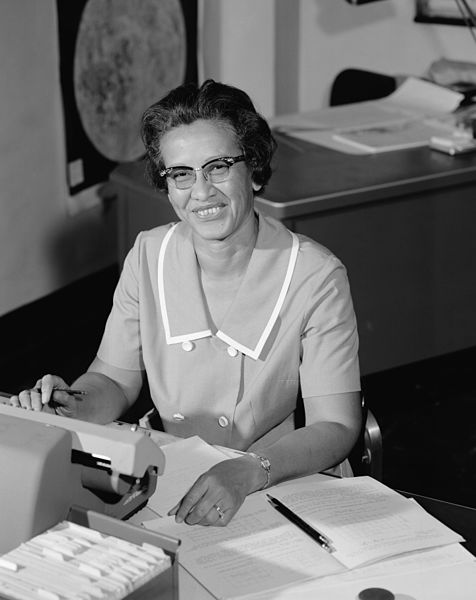Katherine Johnson, a woman who worked with a team of African-American mathematicians to launch the first men into space by making accurate mathematical calculations by hand, turned 100 years old on Sunday.
Katherine Johnson was often called the “human computer” and was even featured in the movie “Hidden Figures” in 2016. In an interview she told The Virginian Pilot that she is fortunate to have lived so long.
“I’m just lucky – the Lord likes me,” she said. “And I like him,” she added, after a pause.
In order to congratulate the famous mathematician, who worked at the Langley Research Center in Hampton, Virginia, NASA posted birthday tweets, specially intended for Johnson, highlighting everything that she did for the space agency and space travel in general.
“Today, retired @NASA_Langley mathematician Katherine Johnson makes her 100th trip around the Sun as she celebrates her birthday!” the space agency wrote in one post. “Send her birthday wishes using #Happy100Katherine & learn about her calculations that launched @NASA_Astronauts to space”
If you could send a birthday message to retired @NASA_Langley mathematician Katherine Johnson, what would it say? Tag your Tweets with #Happy100Katherine to celebrate her trailblazing contributions to space exploration. pic.twitter.com/pLzYqMFu2k
— NASA (@NASA) August 26, 2018
Today, retired @NASA_Langley mathematician Katherine Johnson makes her 100th trip around the Sun as she celebrates her birthday! Send her birthday wishes using #Happy100Katherine & learn about her calculations that launched @NASA_Astronauts to space ?: https://t.co/Iv2DqAt1LK pic.twitter.com/DVvVYnrupe
— NASA (@NASA) August 26, 2018
Katherine Johnson, along with the women from her team, overcame the gender as well as racial divides that were greatly present in the 1950s and 1960s. Not much was even known about these issues for these women until a few years ago when author Margot Lee told their story in her book “Hidden Figures.”
The other women, however, that were part of her team have since died.
On Saturday, just before her birthday, alma mater West Virginia State University officially revealed a statue that honors Johnson. The unveiling was followed by a tweet where the university explained that it “will serve as a source of inspiration to current and future students of all that is possible through dedication, hard work and perseverance.”
Today the University community gathered to dedicate a statue and scholarship in honor of our amazing alum Katherine Johnson. The statue will serve as a source of inspiration to current and future students of all that is possible through dedication, hard work and perseverance. pic.twitter.com/iFOqxnr1eH
— WV State University (@WVStateU) August 25, 2018
Yvonne Cagle, life sciences directorate at the Johnson Space Center said as per the Charleston Gazette-Mail, that the “extraordinary” thing about Dr. Johnson is “she not only prevailed while segregation failed” but “has continued to persevere and thrive with the gracious poise and clarity that defies mere words of explanation.”
What an absolutely remarkable dedication to Dr. Katherine Johnson.
This bronze statue of her overlooks @WVStateU, as well as myself, with the elegance and poise of the real #HiddenFigure Dr. Johnson. ?#HiddenNoNore pic.twitter.com/m8q2O3ehFd
— Yvonne Cagle (@AstroMD_Yvonne) August 25, 2018
Johnson did an extraordinary job by pushing herself into the work that was at that time highly dominated by men, for which she has been credited. Her dedication and hard work secured her a position into the inner circle of the American Space Program, according to a report in CNN.
Johnson was a modest person who never took full credit for the work done to take a manned mission to space. As she said in a 2010 interview, “We always worked as a team. It’s never just one person.”
She made calculations for Alan Shepard’s Mercury flight, the first manned U.S. spaceflight. Moreover, she was the one checking the output for John Glenn’s spaceflight, and later she aided NASA in mapping the surface of the moon during the preparations for the 1969 landing. She also contributed to the return of the Apollo 13 astronauts as they were facing technical issues.
Katherine Johnson retired in 1989 and later in 2015 received the National Medal of Freedom for all her work. Hopefully her work will inspire many other people who are interested in mathematics and astronomy.





